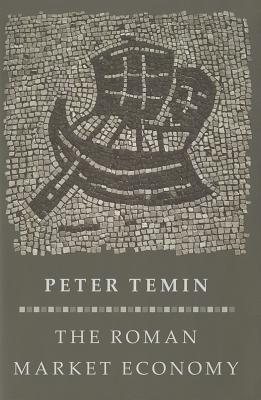
What modern economics can tell us about ancient Rome The quality of life for ordinary Roman citizens at the height of the Roman Empire probably was better than that of any other large group of people living before the Industrial Revolution. The Roman Market Economy uses the tools of modern economics to show how trade, markets, and the Pax Romana were critical to ancient Rome's prosperity. Peter Temin, one of the world's foremost economic historians, argues that markets dominated the Roman economy. He traces how the Pax Romana encouraged trade around the Mediterranean, and how Roman law promoted commerce and banking. Temin shows that a reasonably vibrant market for wheat extended throughout the empire, and suggests that the Antonine Plague may have been responsible for turning the stable prices of the early empire into the persistent inflation of the late. He vividly describes how various markets operated in Roman times, from commodities and slaves to the buying and selling of land. Applying modern methods for evaluating economic growth to data culled from historical sources, Temin argues that Roman Italy in the second century was as prosperous as the Dutch Republic in its golden age of the seventeenth century. The Roman Market Economy reveals how economics can help us understand how the Roman Empire could have ruled seventy million people and endured for centuries.
Author

Peter Temin (born 17 December 1937) is an economist and economic historian, currently Gray Professor Emeritus of Economics, MIT[3] and former head of the Economics Department. Temin graduated from Swarthmore College in 1959 before earning his Ph.D. at MIT in 1964. Beginning in the 1960s and early 1970s he published on American economic history in the 19th century, including The Jacksonian Economy (1969) and Causal Factors in American Economic Growth in the Nineteenth Century (1975), as well as Reckoning with Slavery (1976), which was an examination of the slave economy and its effects. His papers of the 1960s would reflect intense empirical study as part of his working method, including composition of iron and steel products, which would later be part of his analysis of industrial development. He continued his study of 19th century industrialization with Engines of Enterprise.